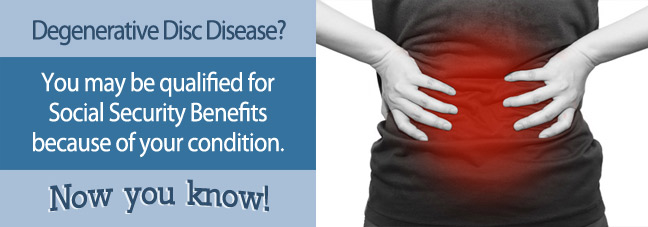Degenerative disc disease (DDD) occurs when osteoarthritis thins or damages the supportive discs in the spine. While it is a relatively common disorder for aging patients, it has the potential to become debilitating and painful.
If your DDD prevents you from working or living your daily life, Social Security disability benefits may be able to provide you with monthly financial assistance. Before starting your application, follow the top three tips for applying for benefits with DDD.
Tip #1: Receive up-to-date motor function tests, biopsies, and/or scans of your spine.
When the Social Security Administration (SSA) evaluates applications, it wants to learn as much as it can about the current state of your disorder. This means providing as much medical evidence as possible to support your case. Because DDD has a tendency to grow worse over time, it is best to give the SSA the most updated representations of your symptoms. Repeating assessments like motor function tests can give the SSA an idea of your ability to move or complete daily tasks. Biopsies and MRIs/CT scans of your spine can also provide official medical documentation of your condition, and can be especially useful if they show degeneration when compared to previous tests.
Tip #2: Compile therapy notes and medication lists to demonstrate your effort in the healing process.

Because DDD is rather common, there are a variety of treatment options available to patients. When the SSA looks over your application, they are more likely to deem you eligible for benefits if they see a history of different treatment attempts. Pain medication, injections, massage therapy, chiropractor sessions, or general physical therapy are all beneficial to include on your application. Even testimonies from therapists or other medical professionals who are familiar with your case can be useful to provide. In general, the more evidence you provide, the more likely you are to receive benefits.
Tip #3: Determine if you may be eligible for an MVA.
Aside from the SSA’s pre-determined standards for DDD disability, you may also be eligible via a medical vocational allowance, or MVA. This program is for people whose disabilities are severe enough to keep them from doing the only work they’ve been trained for in their life experience. For example, landscapers, construction workers, or even desk-based workers like accountants may find it difficult to continue their career with a severe DDD diagnosis. When applying for benefits, be sure to include a detailed list of work history and education history in case this program may be a good fit for you.
Contacting an Attorney
When applying for disability benefits, it is important to properly fill out your paperwork, update the SSA, and stay proactive throughout the process. While it is possible to do this on your own, the best way to remain mistake-free is by consulting with a disability attorney. Their legal experience makes the process simpler, faster, and gives you the best chance at receiving benefits. In the event that your claim is initially denied, attorneys are also the best way to kickstart the appeals process and help you reach your goal.
Before starting your application, consider a free consultation with a disability attorney or advocate today.